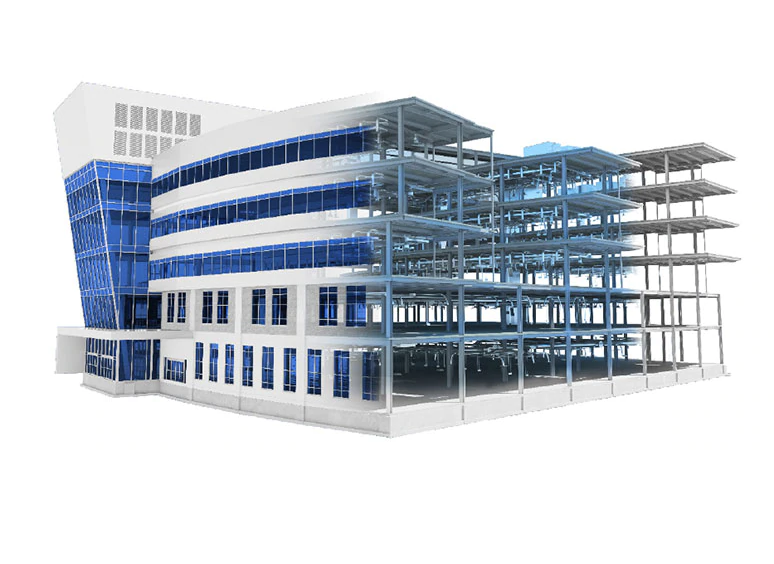In the ever-evolving landscape of construction, technology continues to play a pivotal role in reshaping traditional methodologies. Building Information Modeling (BIM) has emerged as a transformative force, particularly in the field of structural engineering. This article explores the myriad benefits that Structural BIM services bring to the construction industry, ushering in a new era of efficiency, accuracy, and collaboration.
Higher Visualization and Communication
Structural BIM services provide a three-dimensional representation of a building’s structure, offering stakeholders a clear and comprehensive visualization. This visual clarity facilitates effective communication among architects, engineers, contractors, and other project participants. The ability to view and understand the structural elements in a 3D environment minimizes misinterpretations and ensures that everyone is on the same page, fostering collaboration from the conceptual stage to construction.
Improved Coordination and Clash Detection
One of the primary advantages of Structural BIM service is the ability to detect clashes or conflicts in the design early in the process. This is especially crucial in structural engineering, where coordination with other building systems is intricate. BIM models allow for the integration of structural elements with MEP (Mechanical, Electrical, and Plumbing) systems, reducing the likelihood of clashes during construction. Early clash detection translates to fewer errors, reduced rework, and overall cost savings.
Accuracy in Design and Analysis
Structural BIM Solutions enable precise design and analysis of building structures. Engineers can model complex structural components with accuracy, considering factors such as loads, stresses, and material properties. This level of detail ensures that the structural design meets safety standards and performance requirements. Additionally, BIM facilitates the analysis of different design scenarios, allowing engineers to optimize structural efficiency and performance.
Streamlined Construction Workflow
The integration of Structural BIM services streamlines the entire construction workflow. From initial design and documentation to construction and facility management, BIM models serve as a central repository of information. This cohesive approach reduces redundancies, minimizes errors, and enhances overall project efficiency. The streamlined workflow contributes to timely project delivery and improved collaboration among project stakeholders.
Cost and Time Savings
Structural BIM Solutions contribute significantly to cost and time savings throughout the construction lifecycle. The ability to detect clashes early on minimizes the need for costly rework. Precise design and analysis reduce material wastage and construction delays. The efficient collaboration and coordination facilitated by BIM result in faster decision-making processes. Collectively, these factors contribute to a more cost-effective and time-efficient construction project.
Sustainable Design Integration
In an era where sustainability is a key consideration in construction, Structural Services play a crucial role in integrating sustainable design principles. BIM models allow engineers to assess the environmental impact of structural decisions, optimize energy performance, and explore eco-friendly material options. This integration of sustainability into the structural design process aligns with the growing emphasis on green and environmentally conscious construction practices.
Lifecycle Management and Maintenance
Structural BIM models serve as valuable assets beyond the construction phase. They contain comprehensive information about the structural elements, including specifications, materials, and maintenance requirements. This data becomes instrumental in the ongoing lifecycle management of the structure. Facility managers can use BIM models for effective maintenance planning, ensuring the long-term durability and performance of the building.
Decision Support with Structural BIM services
Structural Services provide a platform for thorough risk analysis and decision support. Engineers can simulate various scenarios, assess potential risks, and make informed decisions based on the analysis. This proactive approach to risk mitigation reduces uncertainties during construction, enhances safety, and contributes to the overall success of the project.
Regulatory Compliance and Documentation
Meeting regulatory compliance is a critical aspect of construction projects. Structural BIM services assist in ensuring that the structural design adheres to local building codes and standards. Additionally, BIM models serve as comprehensive documentation, providing a detailed record of the structural design and its compliance with regulations. This documentation is invaluable for audits, inspections, and future reference.
Increased Stakeholder Confidence
The use of Structural BIM service instills confidence among project stakeholders. Owners, investors, and regulatory authorities can rely on the accuracy and transparency offered by BIM models. The enhanced visualization, coordination, and documentation contribute to a higher level of trust in the project’s structural integrity and overall success.
Conclusion
The benefits of Structural BIM services in construction are multifaceted, ranging from enhanced visualization and coordination to cost savings and sustainable design integration. ENGISOFT ENGINEERING — BIM Staffing & BIM Services the construction industry continues to embrace technological advancements, Structural BIM stands as a cornerstone for efficient, accurate, and collaborative structural engineering.











